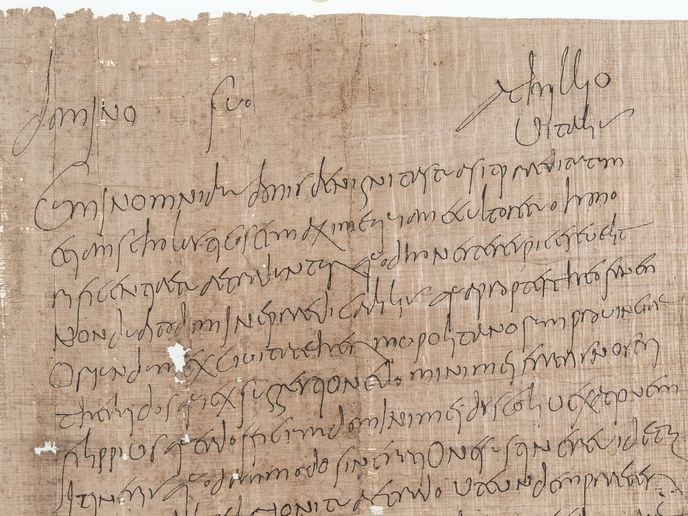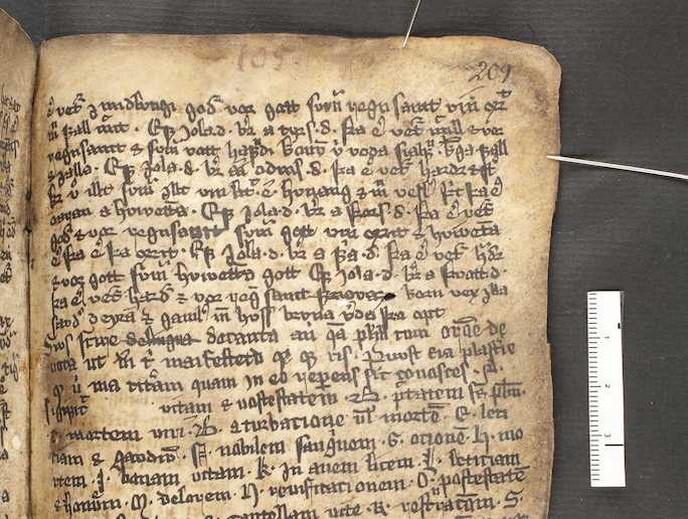Egyptian papyri: Latin where one expects Greek
The Roman Empire expanded continuously from 31 BC, eventually spanning three continents at its height in 117 AD. The western provinces used Latin exclusively in all administrative functions as well as in civil society. The eastern provinces relied on Greek for administrative purposes and retained their many local languages in everyday life. Thus, Giulio Iovine, working under the supervision of Maria Chiara Scappaticcio of the University of Naples Federico II(opens in new window) and Fabian L. W. Reiter of the University of Bologna(opens in new window), was intrigued to discover that papyri from Egypt in the Roman East from the 4th to the 7th century AD – the time of the Arab conquests – contained Latin texts. With the support of the Marie Skłodowska-Curie Actions(opens in new window) programme, he set out to investigate this within the context of the LAREGRE(opens in new window) project.
The western and eastern Roman Empires
Since the official language of the Roman Empire was Latin, some Latin was not unexpected in Eastern texts before 285 AD, when emperor Diocletian rose to power. However, Diocletian began splitting the Empire into western and eastern parts. It was not clear why certain official documents in Egypt were drafted partially or entirely in Latin after Diocletian’s rule. Furthermore, in 395 AD, the empires were formally separated with independent governance (the western part ruled by a Latin-speaking emperor in Rome and the eastern by a Greek-speaking one in Constantinople), a situation that lasted until the end of the Western Roman Empire in 476 AD. Iovine wondered why Latin would continue to be used after this formal separation and well beyond the end of the Western Roman Empire and the continued growth of the Eastern Roman Empire (the Byzantine Empire).
Latin texts on Egyptian papyri under Diocletian and beyond
Iovine’s research of nearly 400 papyri showed that the imperial court in Constantinople used some Latin in documents. Many Latin-speaking refugees there helped draft these documents that were then reproduced and distributed in the provinces. “At the edges of the Eastern Roman Empire, official correspondence between army or civilian administration was often drafted in a very convoluted and literary Latin, learned in law schools in the greatest cities of the East,” continues Iovine. Documents of less importance or dealt with by less important officials also contained traces of Latin as a token of authenticity, officially linking them to Rome and its power. In addition, many courtiers and intellectuals considered using Latin a sign of prestige whether they mastered it or not. Iovine also found that notaries, retired soldiers, Christian fellowships and others not required to use Latin in their official documents or private correspondence did so to give importance to their writings.
Latin as a link to the prestige of the Roman Empire
Iovine continues: “Drawing inferences from the scanty evidence available was challenging – I had to abandon many of my theories, unable to prove or disprove them. Nevertheless, deciphering written artefacts or understanding and correcting a transcription are among the most enjoyable tasks in the field of ancient history.” Iovine’s meticulous inquiries shed new light on the use of Latin in Egypt from the 4th to the 7th century AD. Rather than serving a political or administrative purpose, it appears to be Egypt’s rulers’ way of signifying and reinforcing Egypt’s connection to the once largest and most powerful political and military entity in the world.







